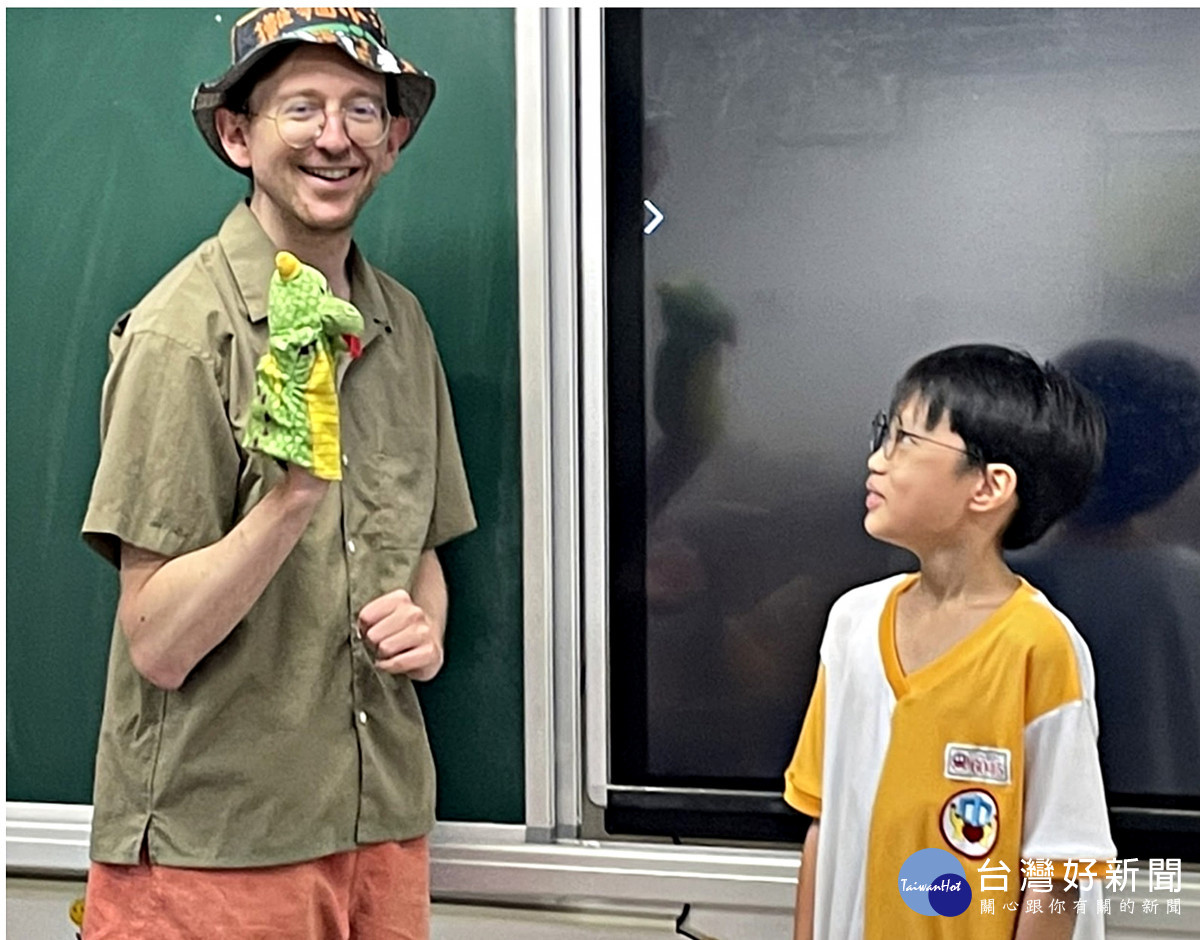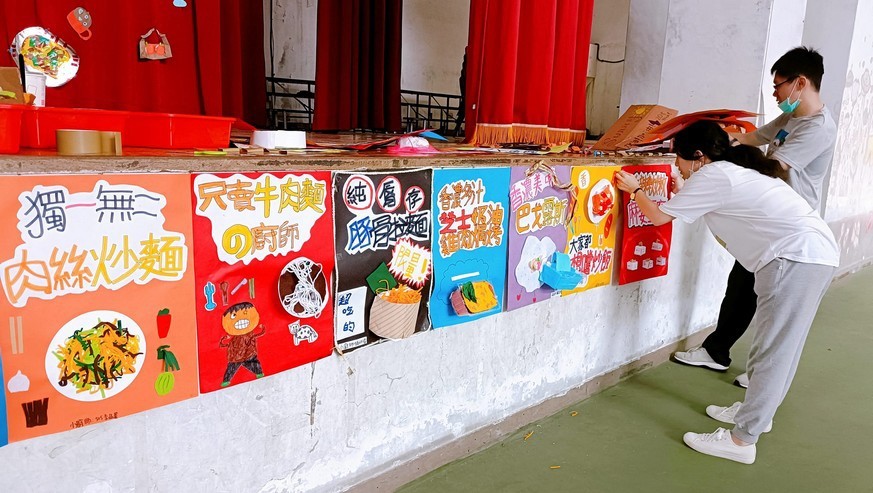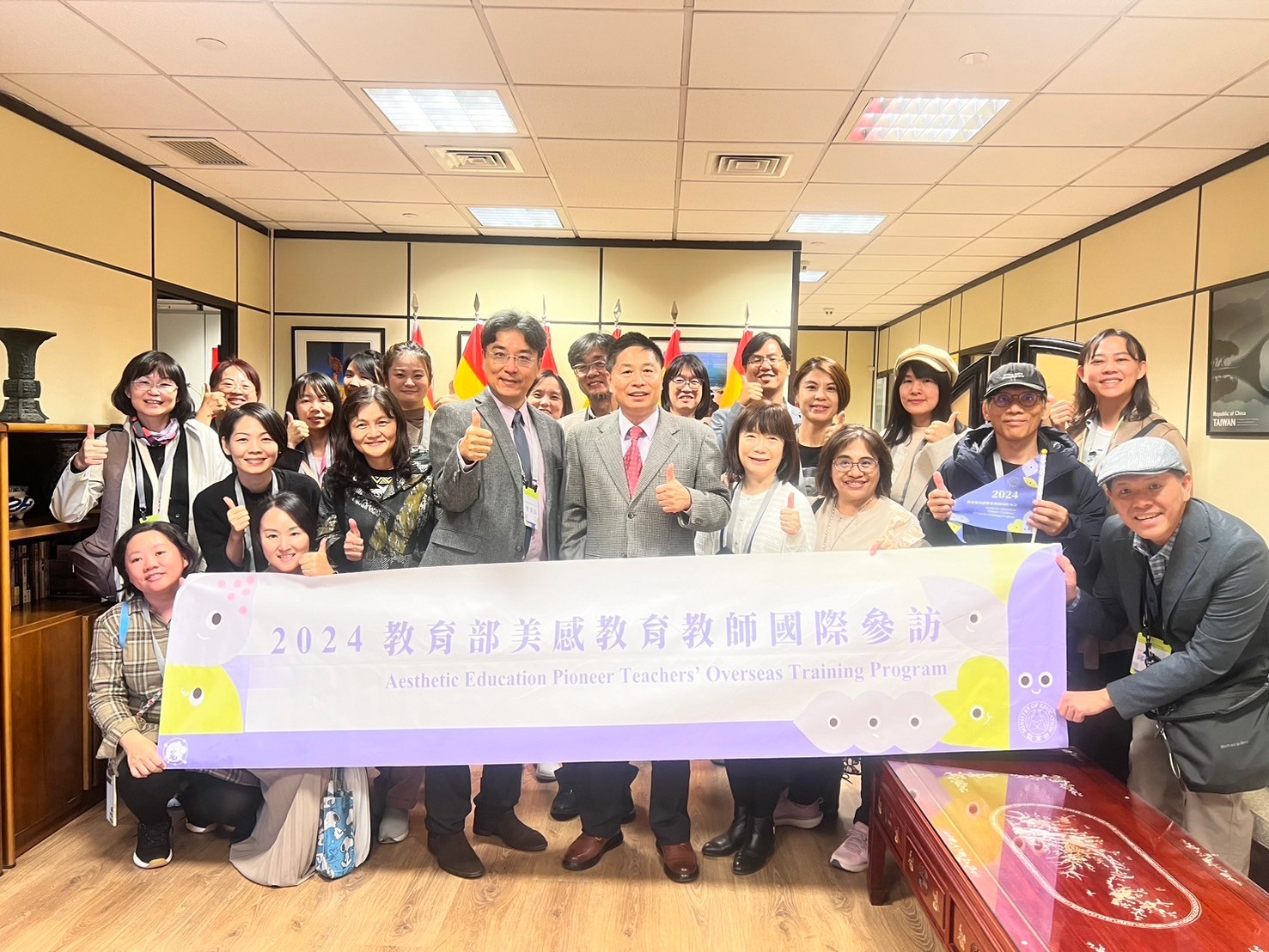2024 International Visit of Aesthetic Education Teachers from the Ministry of Education-Practice and Innovation of International Art Education
news source: <Ministry of Education Global Information Network>
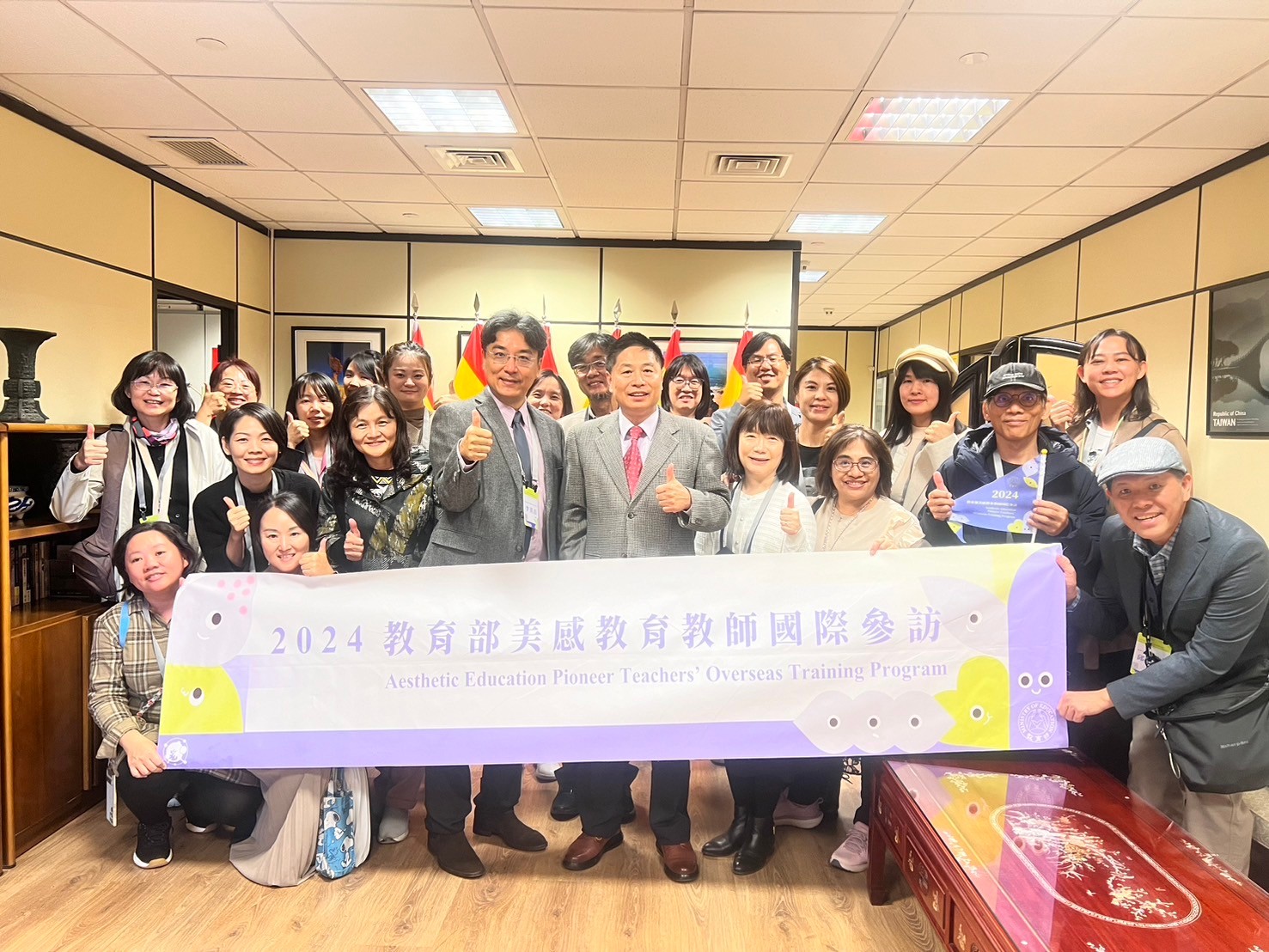
The aesthetic visiting team visited the Taiwan Office in Spain
In order to enhance teachers' ability to practice aesthetic courses with international literacy, the Ministry of Education invited National Taiwan Normal University to organize the "2024 International Visit Program for Aesthetic Education Teachers", leading two groups of 40 outstanding Taiwanese aesthetic teachers to Spain in October and November. , conduct in-depth visits to museums, world cultural heritage, art buildings and school education, and bring a full range of learning experience to participating teachers through the interweaving of culture, art and education, and inspire new visions of aesthetic education.
The Ministry of Education stated that the international visit plan participated by the selected aesthetic education teachers was one of the implementation projects of the "Cross-disciplinary Aesthetic Education Excellence Pilot Plan". The teachers visited Spanish landmark buildings and art venues, including the Milan Luo Art Museum, Picasso Art Museum, Prado Museum, etc., and experienced Spain's rich artistic heritage and its high emphasis on aesthetic education. Aesthetic teachers shared their design from light angle, flower garden planting, building materials to color matching, etc. Architects’ thinking on humanities can be found everywhere, and it also inspires teachers’ creative ideas for aesthetic curriculum design.
Spain has always had a good ceramic-making tradition, and the technical and vocational professional teaching system is also quite mature. Whether it is industrial ceramics or artistic ceramics, countless talents have been cultivated by professional schools. In Madrid, the teacher team visited the century-old Madrid Superior Ceramic School (La escuela superior de cerámica de la Moncloa), a five-year school founded by master ceramicist Francisco Alcantara. The curriculum integrates traditional techniques and modern materials, from glaze preparation to personal creation, taking into account both technical and artistic expression. Teachers particularly observed that the school combines practical skills with a market orientation to help students apply craft skills to a variety of fields. Teacher Qiu Yujun from Dazhong Elementary School in Taoyuan City said: "The school's precise use of ceramics in architecture reminds teachers of the ceramic museum in Yingge and the cut-and-stick art of religious temples. It is worthy of reference for Taiwan's architecture industry and ceramic artists to work together. Let’s work together to create sustainable development of local cultural characteristics.”
In Barcelona, Escola Auditori, a new primary school with art education as its core, emphasizes children's free exploration and primary school students' observational learning. In the kindergarten stage, the "Atelier" teaching method is adopted with creative exploration as the core, providing a creative space called "Atelier", allowing students to freely use various materials and tools, and conduct creative exploration of materials and colors through professional guidance. ; At the primary school level, the "Mira-Art" teaching method emphasizes observation, hands-on practice and critical thinking. Mira means "seeing" or "observation" in Spanish. Through this teaching method, art is closely integrated with other subjects. . The school has designed multiple themed learning spaces, such as art exploration classrooms, multi-functional knowledge exploration rooms and body rhythm rooms, and has set up a quiet fluorescent space for students to calm their minds. The innovative space planning has inspired teachers to have a better understanding of the campus. Rethinking design.
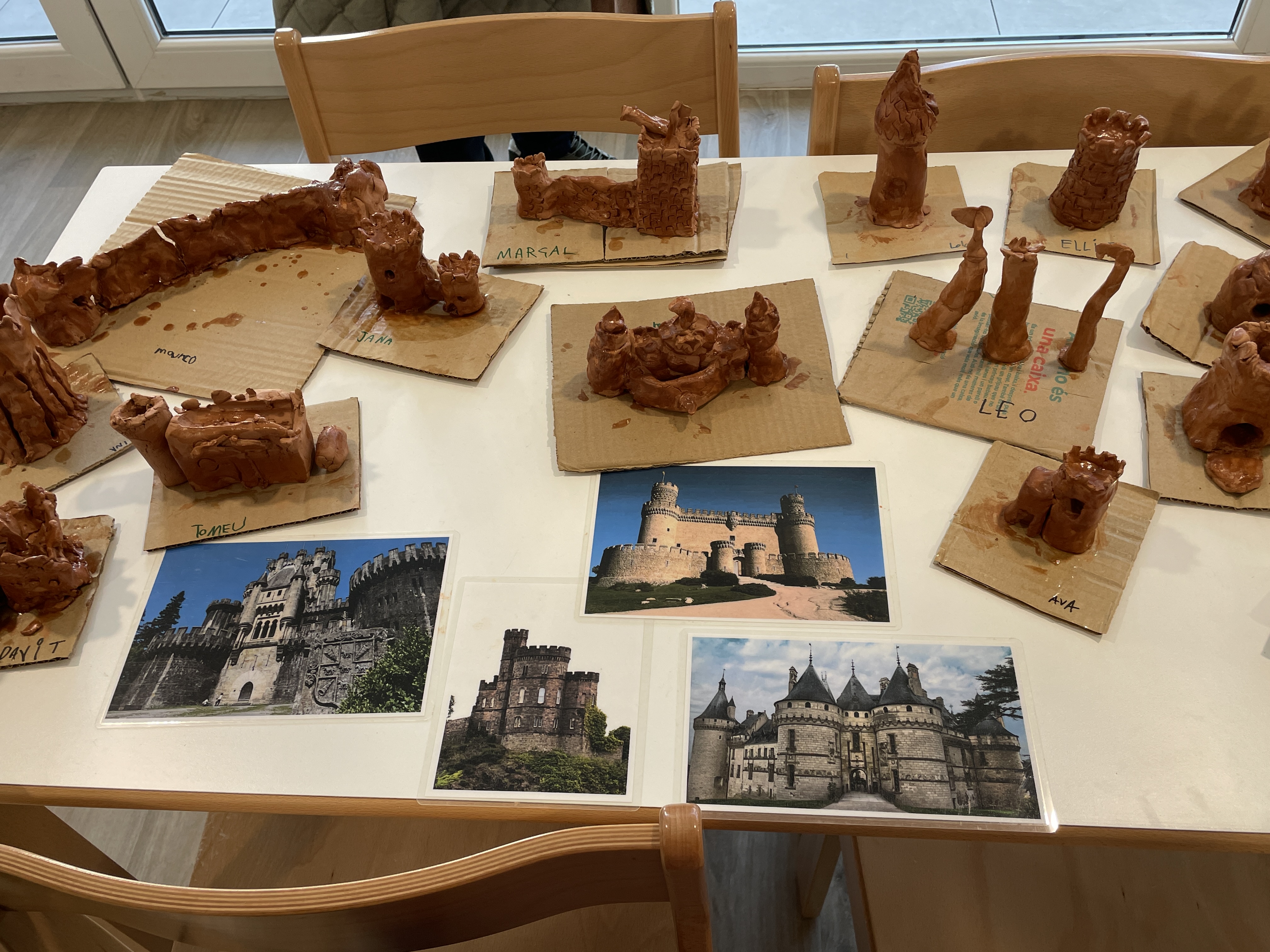
Escola Auditori Elementary School – Students create clay works referencing historic buildings 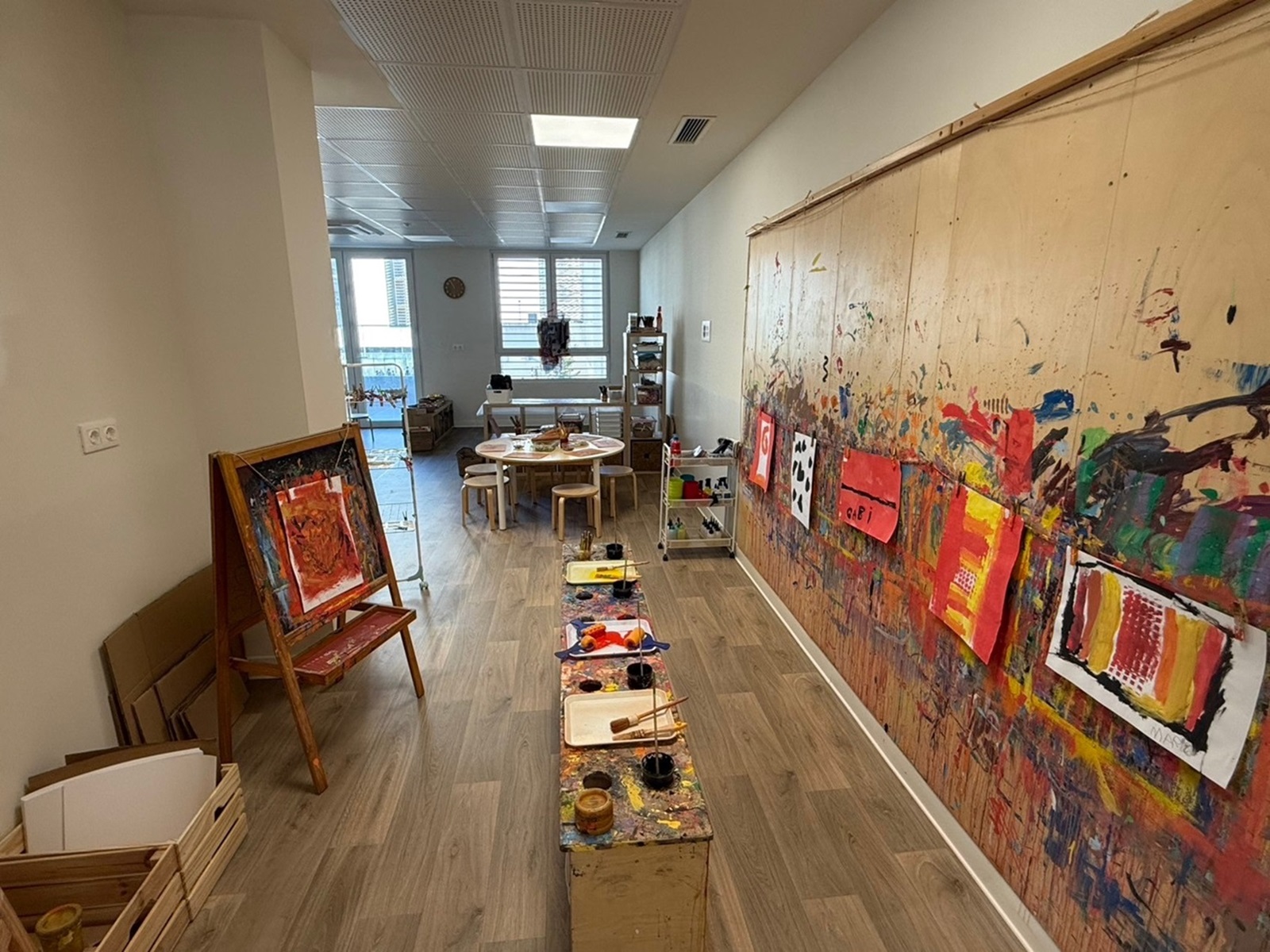
Escola Auditori school – creative space called “Ateliert”
In addition, at the key middle school in Madrid - IES Ramiro de Maeztu (IES Ramiro de Maeztu), the aesthetics teacher observed that the school integrated traditional culture and modern issues into the curriculum in order to cultivate students' interdisciplinary literacy. The school's art classroom provides a variety of materials and professional guidance to encourage students to explore their personal styles while improving their artistic expression skills. The corridors also display tile design works by students combining art with mathematics curriculum concepts. Teacher Cai Xingfen from Toufen Elementary School in Miaoli County said: "We also saw in the classroom that students are learning to use compasses, rulers, pens... and other tools to practice angles and lines. The student works in the school display a single geometric design designed by the students. Graphics, and demonstrate the application of repeated arrangement and color configuration planning in design to enhance the application and connection of art learning and life." From this, we can see that their solid professional technical training and the implementation of innovative teaching methods can contribute to art and life. Creative practice combining disciplines.
The teacher team of this project also visited the Universidad Complutense de Madrid, one of the oldest universities in Spain. Although the School of Fine Arts was established relatively late, its century-old heritage can still be seen, and it integrates contemporary teachings into its teaching. Practice, and pay attention to the employment rate of students with art majors after graduation, which also shows their emphasis on the link between the cultivation of artistic talents and future employment. Tainan City Fuxing Junior High School teacher Yu Xiulan praised: "The Academy of Fine Arts' courses on wood carving, stone carving, murals, cultural relic restoration, and non-institutional art education demonstrate the connection between school education and the sustainable management of national cultural assets. Education and social aesthetic elements are interconnected. and support, Taiwan can learn from it.” Finally, the team also visited the Taipei Economic and Cultural Office in Spain for relevant exchanges.
The Ministry of Education stated that this international visit program not only leads teachers to have an in-depth understanding of Spain’s diverse practices and cultural heritage in education, but also inspires thinking and innovation in Taiwan’s education, and responds to the Ministry of Education’s third phase of the aesthetics project’s theme of “Aesthetics is Life: Enlightenment from an early age, rooted in life, local and international, and sustainable practice" concept is promoted in five major aspects: talent cultivation, curriculum practice, learning environment, international links and support system. In order to continue to promote the "international link" of aesthetic education, the Ministry of Education also plans to organize an experience sharing session for teachers who returned from overseas visits in February 2014, so that the benefits of international aesthetic exchanges can be spread to more on-site teachers. For more information on cross-disciplinary aesthetic education courses, please go to the "Interdisciplinary Aesthetic Education Excellence Pilot Project" website (https://www.inarts.world) to inquire.
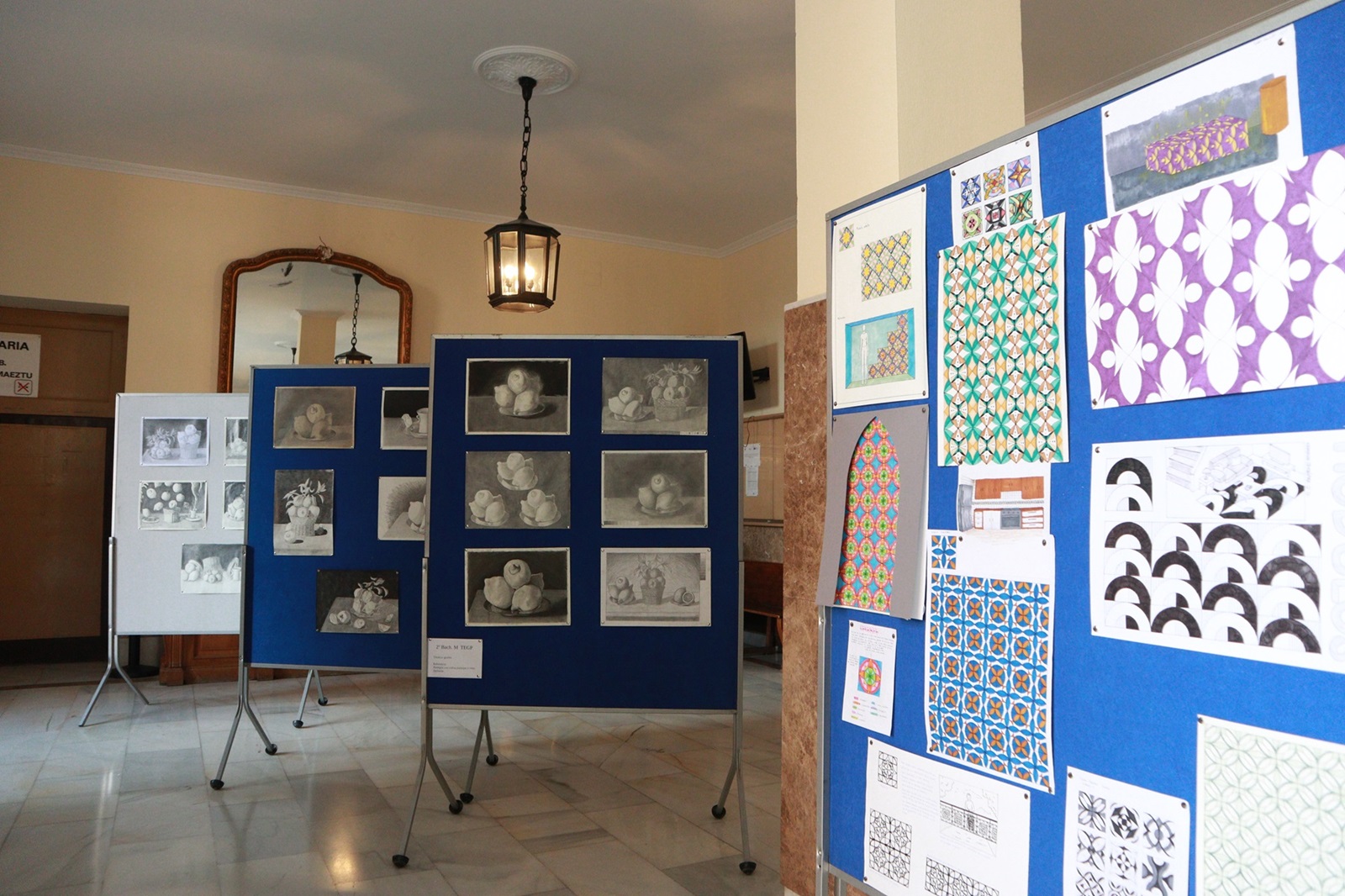
IES Ramiro de Maeztu Middle School – Corridor displays students’ learning achievements 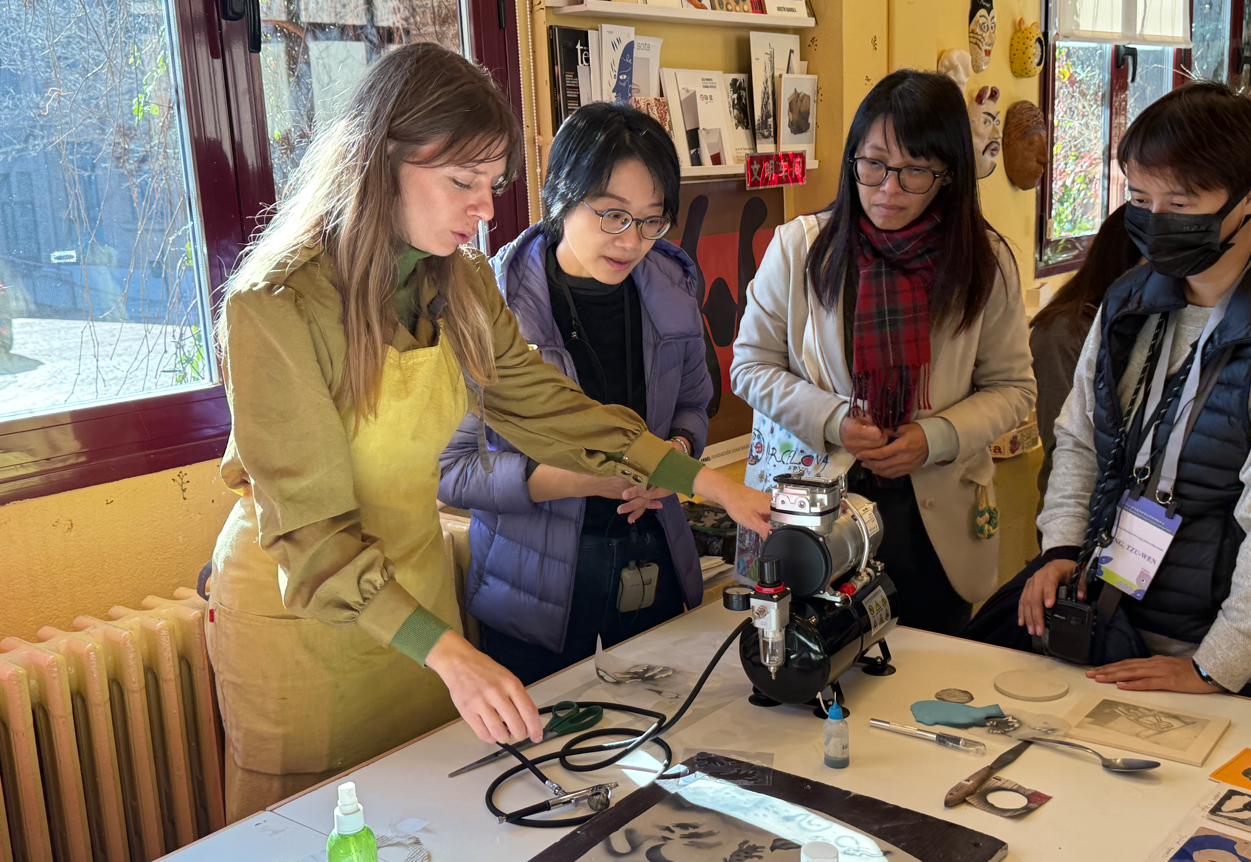
Escuela de Cerámica de la Moncloa Madrid Ceramic School – Class Visit

